Welcome To CARHOME
China OEM Manufacturer Pickup Leaf Spring for Pick up 4X4 Truck
Detail
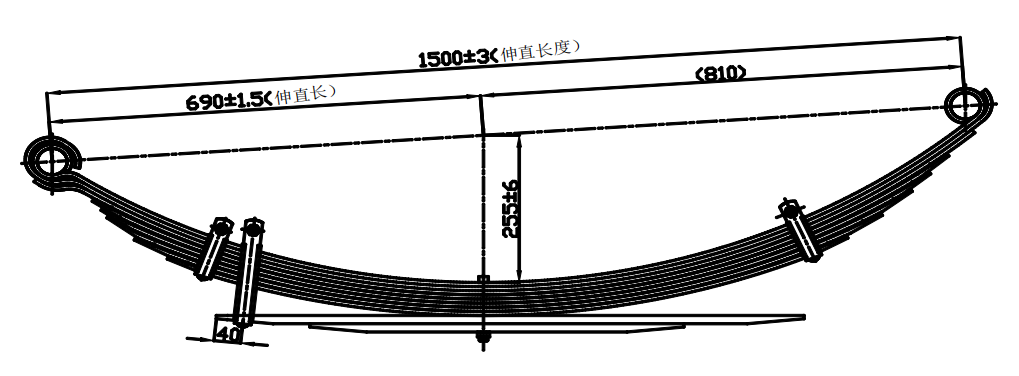
The leaf spring is suitable for TOY L/CRUISER REAR Pickup
1. The item total has 10 pcs, the raw material size is 70*7 for first to eigth leaf, the ninth and tenth leaf is 70*14
2. Raw material is SUP9
3. The main free arch is 285±1mm, and the helper free arch is 4±1mm, the development length is 1500, the centre hole is 10.5
4. The painting use electrophoretic painting
5. We also can produce base on client's drawings to design
Pickup 4x4 leaf springs part number:
| SN | TOYOTA OEM | LEAF | ASSY | SIZE(MM) | SN | TOYOTA OEM | LEAF | ASSY | SIZE(MM) |
| 1 | 48210-35061 | F1 / F2 | 50×7 / 60×7 | 13 | 48210-60742 | RA | 70×7 | ||
| 2 | 48210-35670 | RA | 60×7 | 14 | 48110-60391 | FA | 10L | 70×7 | |
| 3 | 48110-35210 | FA | 7L | 60×7 | 15 | 48210-9760A | FA | 7L | 80×12 |
| 4 | 48210-35120 | FA | 5L | 60×7 | 16 | 48101-3031 | F1 / F2 | 10L | 90×13 |
| 5 | HILUX REAR | RA | 5L | 60×8 | 17 | 48112-1250 | F1 / F2 | 90×13 | |
| 6 | 48210-226660 | RA | 5L | 60×8 | 18 | 48211-1460 | R1 | 90×20 | |
| 7 | 48110-60160 | RA | 5L | 70×6 | 19 | 48211-35881 | NO.1 / NO.2 | 60×7 | |
| 8 | 48110-60170 | RA | 7L | 70×7 | 20 | 48211-OK230 | NO.1 / NO.2 | 60×8 | |
| 9 | 48210-60211 | RA | 5L | 70×7 | 21 | 48110-60250 | NO.1 / NO.2 | 70×6 | |
| 10 | 48210-60430 | RA | 9L | 70×7 | 22 | 48210-60010 | NO.1 / NO.2 | 70×7 | |
| 11 | 48211-60209 | R1 / R2 | 10L | 70×7 | 23 | 48210-60240 | NO.1 / NO.2 | 70×7 | |
| 12 | 48210-60062 | F1 / F2 | 70×6 | 24 | 48110-60020 | NO.1 / NO.2 | 70×6 |
Applications

What are leaf springs?
Leaf springs are a basic form of suspension made up of layers of steel of varying sizes sandwiched one upon the other. Most leaf spring setups are formed into an elliptical shape through the use of spring steel which has properties that allow it to flex as pressure is added at either end, but then returning to its original position through a damping process. The steel is generally cut into rectangular sections and then once held together by metal clips at either end and a large bolt through the centre of the leafs. It is then mounted to the axle of the vehicle using large U-bolts, securing the suspension in place. The elasticity of the spring steel allows for a pliancy within the suspension for comfort and control of a car while moving, and a leaf spring setup has been proven as a viable option for cars for many decades, despite only really being found on HGVs and Military vehicles these days.
What are the disadvantages?
A big downside of leaf setups is they aren’t brilliant when it comes to suspension tuning. In racing and performance car applications, it is vital to be able to manipulate a suspension setup for the driving conditions and for different driving styles, something that is much easier nowadays through adjustable coilovers. This lack of adjustability of leaf setups is emphasised by the fact that the ends of the leaf springs are attached to the chassis, which leaves very little scope for shortening or lengthening of the leafs. Adjustments can therefore only really be made through the strength and flexibility of the material used to make up the leaf springs. Leafs also allow very few directions of motion and are only really designed to move vertically, while a spring and damper combination can be manipulated into a much larger range of motion. Leaf springs are firmly clamped together and bolted to the chassis as well as clipped to the axle, thus giving little to no scope for any other direction of motion which can lead to heavy wear on the joints and connections holding the setup together. This connection with a live rear axle can cause comical dynamic characteristics in a car when compared to a more modern independent suspension setup, something that older Mustangs are famous for. The rear axle will simply bounce around high speed corners as the suspension and axle are forced to move around together, when a modern damped system would add much more composure to the driving experience In comparison with a helical spring, leaf springs are generally much stiffer simply down to the steel construction and the tight package that they are bolted and clamped into. Ride comfort is therefore not a feature of vehicles that use leaf springs which made their popularity decrease dramatically after proper dampers were introduced in the 1970s to everyday cars in a cost-effective manner.
Reference
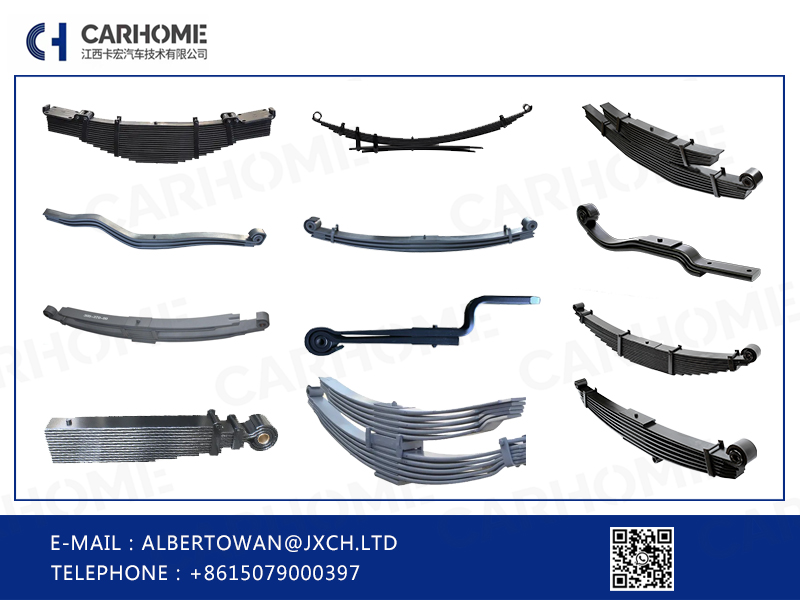
Provide different types of leaf springs which include conventional multi leaf springs, parabolic leaf springs, air linkers and sprung drawbars.
In terms of vehicle types, it include heavy duty semi trailer leaf springs, truck leaf springs, light duty trailer leaf springs, buses and agricultural leaf springs.
Production
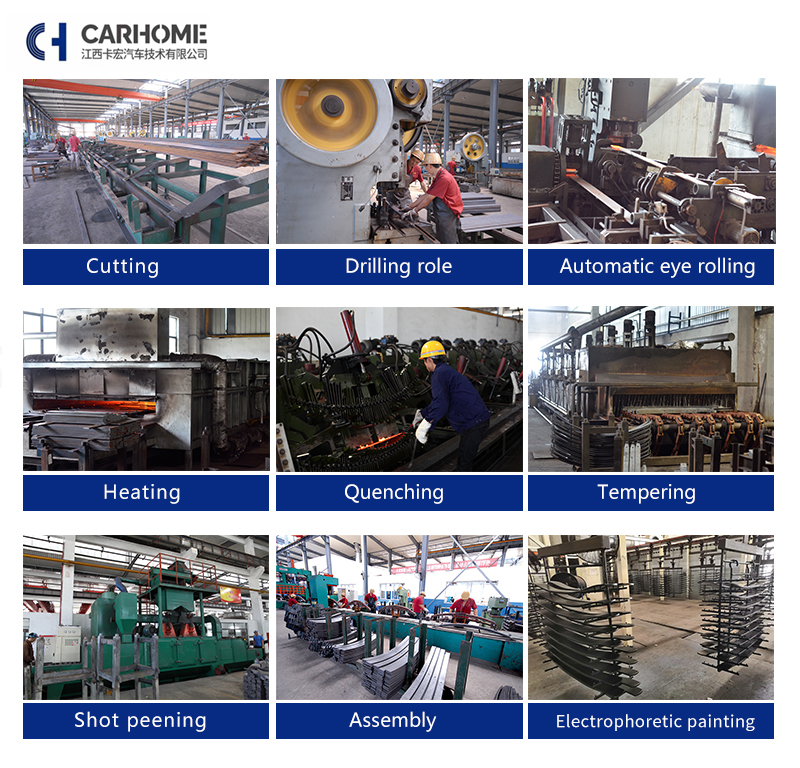
Packing & Shipping
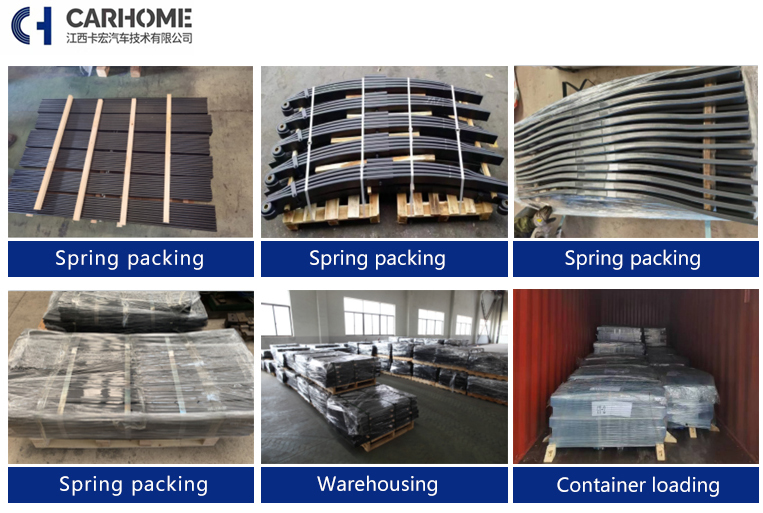
QC equipments
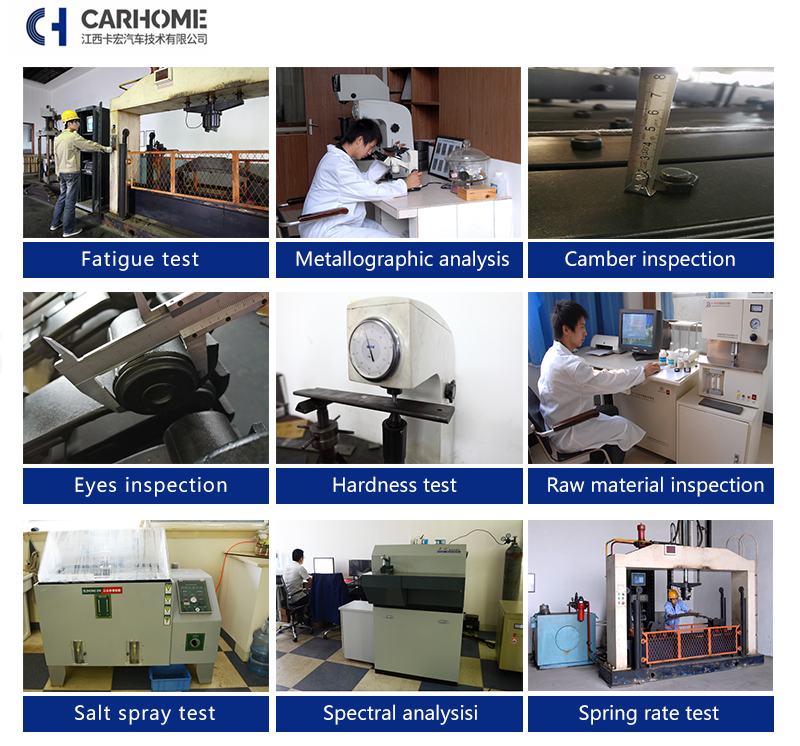
Our advantage
Thickness less than 20mm. We use material SUP9
Thickness from 20-30mm. We use material 50CRVA
Thickness more than 30mm. We use material 51CRV4
Thickness more than 50mm. We choose 52CrMoV4 as the raw material
We strictly controlled the steel temperature around 800 degree.
We swing the spring in the quenching oil among 10 seconds according to the spring thickness.
Each assembling spring set under stress peening.
Fatigue test can reach over 150000 cycles.
Each item use electrophoretic paint
Salt spray testing reach 500 hours
Technical aspect
1、Product technical standards:implementing GB/T 19844-2018, GT/T 1222-2007
2、More than 10 spring engineers who have many years experience to support
3、Raw material from the top 3 steel factory in China
4、Finished products tested by Stiffness Testing Machine, Arc Height Sorting Machine and Fatigue Testing Machine, etc
5、Processes inspected by Metallographic Microscope, Spectrophotometer, Carbon Furnace, Carbon and Sulfur Combined Analyzer and Hardness Tester, etc
6、Application of automatic CNC equipment such as Heat Treatment Lines and Quenching Lines, Tapering Machine, Cutting Machine and Robot-assitant production, etc
7、Optimize product mix and reduce customers’ purchasing cost
8、Provide design support,to meet customers’ cost and requirements
Service aspect
1、Excellent team with rich experience,provide professional service
2、Thinking from the perspective of customers, deal with the needs of both sides systematically and professionally, and communicate in a way that our customers can understand
3、7x24 working hours, to ensure our service systematical, professional, timely and efficient


















